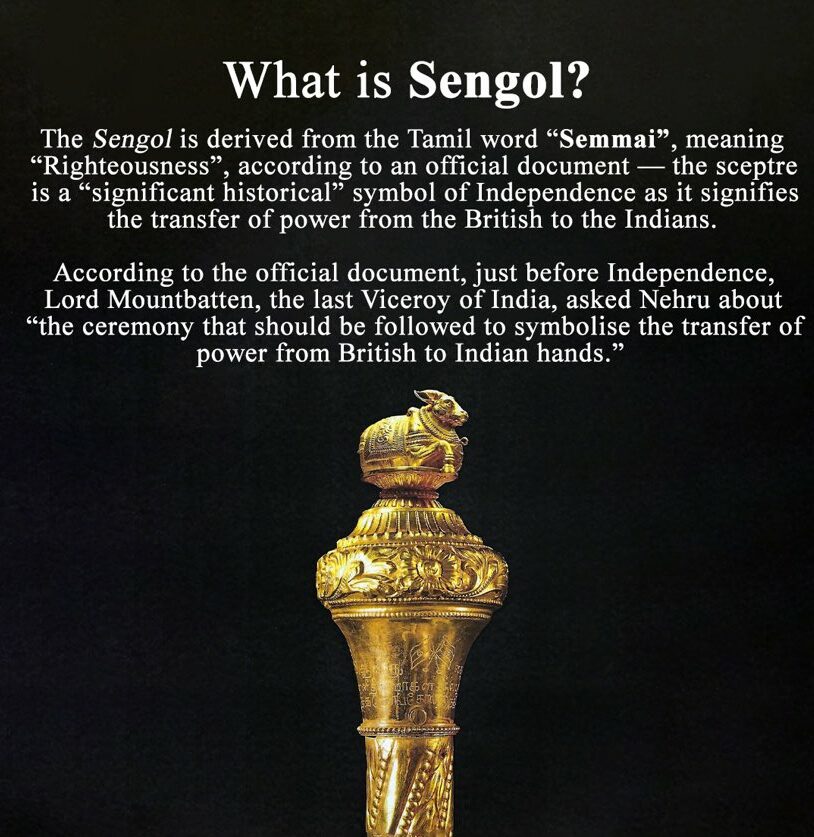New Parliament To House Sceptre
Context:
According to Union Home Minister Amit Shah on Tuesday, Prime Minister Narendra Modi will place the Sengol, a sceptre handed by the British to India’s first Prime Minister Jawaharlal Nehru to signify the handover of power in 1947, within the new Parliament structure.
Points to Ponder:
-

The Sengol, a sceptre gifted by the British to Jawaharlal Nehru, India’s first prime minister, will be placed in the new Parliament building by Prime Minister Narendra Modi.
- The Sengol, which now resides at a museum in Prayagraj (formerly Allahabad), symbolises the change of power in 1947.
- The Lok Sabha Speaker’s podium would be close to where the Sengol will be erected, according to Union Home Minister Amit Shah, who emphasised that Parliament House is a sacred place.
- The Sengol has a rich history that dates back to Tamil Nadu’s Chola period when it was first used to signify the handover of power between monarchs.
- A five-foot-long, delicately carved, gold-plated silver sceptre with a finial featuring the Nandi god, this Sengol is unique.
- The Thiruvavaduthurai Adheenam (pontiff) ordered the sceptre, which was thereafter given to Jawaharlal Nehru.
- At the installation ceremony, blessings will be given by each of the 20 presidents of Adheenam.
- The Sengol’s construction worker Vummidi Bangaru Chetty will also take part in the celebration. He’s 96 years old now.
- Dancer Padma Subrahmanyam’s letter to the Prime Minister’s Office sparked a considerable investigation by the Culture Ministry and the Indira Gandhi National Centre for the Arts (IGNCA), which led to the decision to install the Sengol.
- On August 15, 1947, when he raised the National Flag, Nehru gave his well-known “Tryst with Destiny” address right before the Sengol ceremony.
- Although the ceremony was not formally recorded, it received extensive coverage at the time in Indian and global media, including Time magazine.
- The event was hastily planned due to the urgency of the situation during Partition and the violence that followed, which caused it to vanish from the institutional memory of the Indian state.
- Reports about the Sengol-vesting technique used by the Indian government during the transfer of power reappeared in the Tamil media in 2017.
- The sacred Tamil text Thevaram was being sung when the Sengol was presented to Nehru with the Nandi finial, signifying divine blessings and the call for just and equitable government.
- The golden sceptre, which was worth $15,000 at the time, was made by Chennai-based jewellers and diamond dealers Vummidi Bangaru Chetty and Sons.
- A snapshot of the occasion is kept in the home of the Vummidi Bangaru Chetty family, who made the Sengol, even though their oldest member is over 95 years old and can no longer recollect the specifics.





